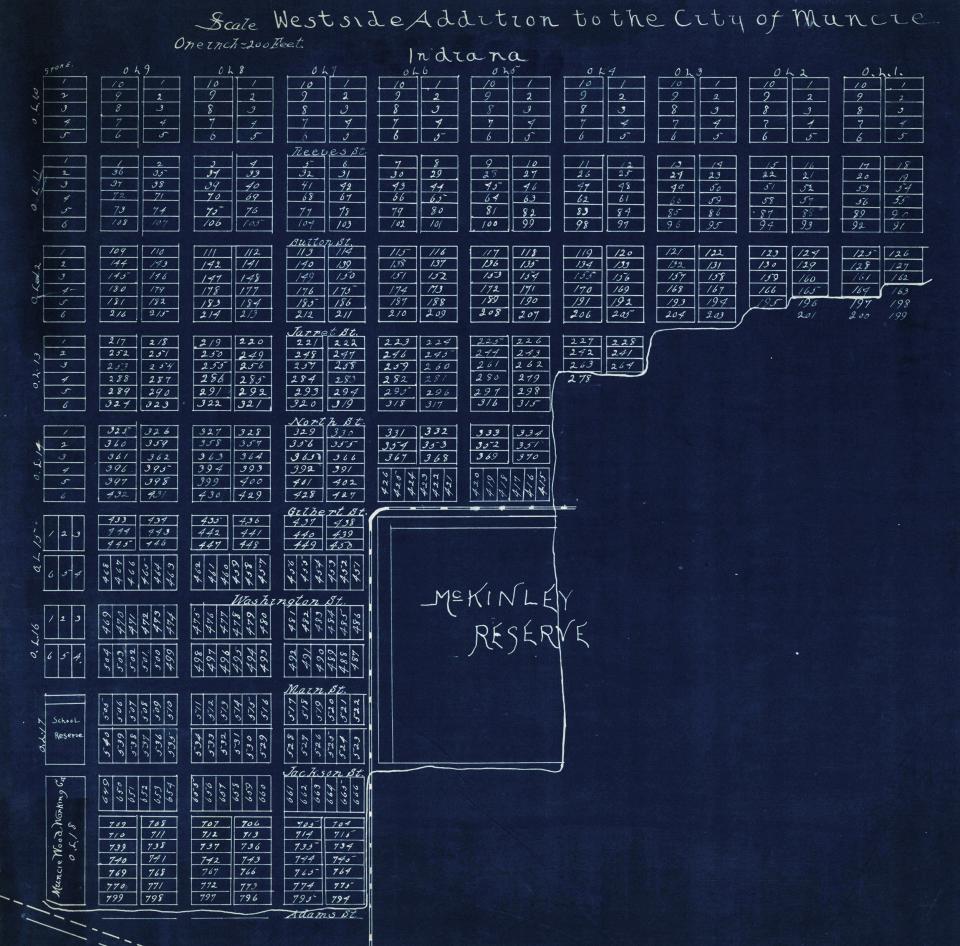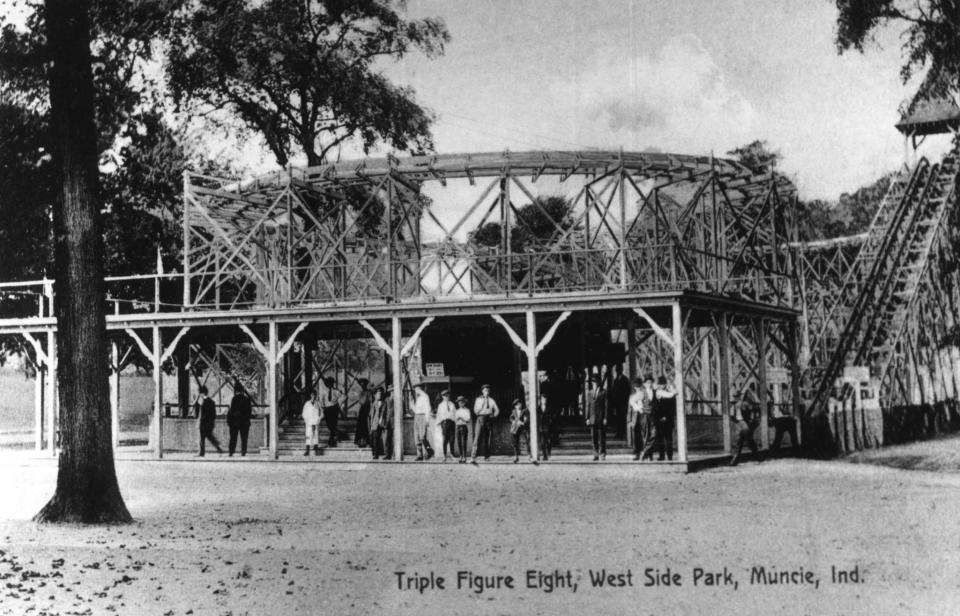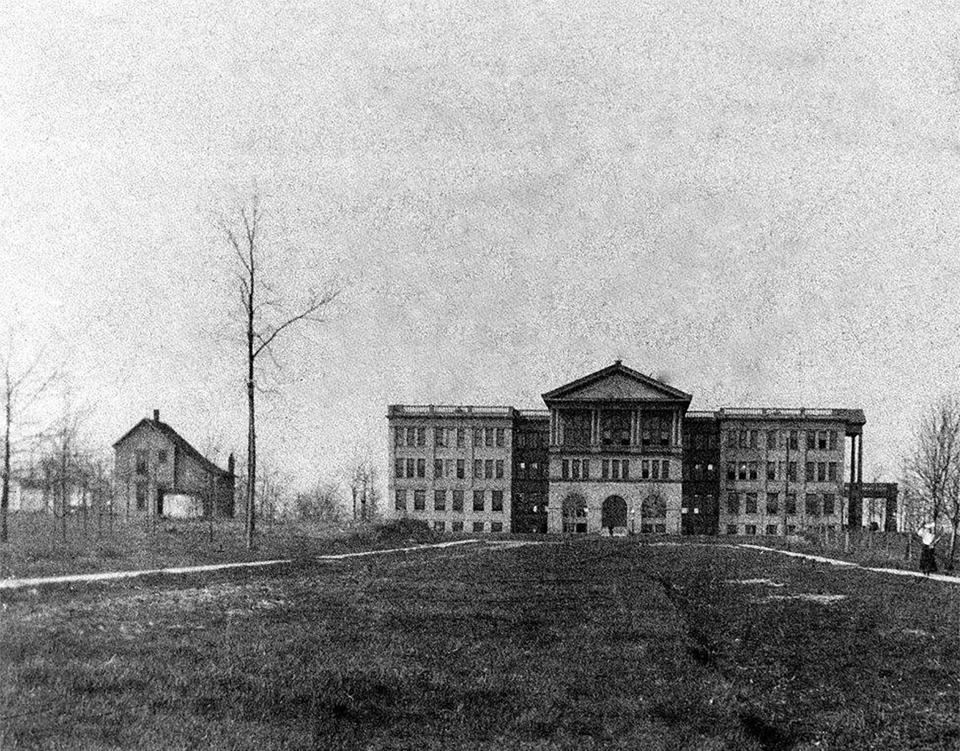ByGone Muncie: The rise and fall of Normal City west of the White River
“Incorporation is the result of civilization, and now is the time for Westside to act.” — Charles Adamson
In early November 1898, residents from Muncie’s Westside filed a petition with Delaware County’s commissioners to incorporate as a town. At the time, about 700 people lived in the Westside suburb, 190 of whom could legally vote (men who owned land there). Two-thirds signed the petition for incorporation.
According to the Muncie Daily Herald, commissioners found “that everything was presented in a legal manner” and “issued a call for an election to be held in Gammon’s Barber Shop on Thursday, December 1, 1898.” Walter Gammon’s place was near the corner of Jackson and McKinley.
The referendum presented a choice for Westsiders: incorporate as a new Delaware County town, with their own government and taxes, or remain part of unincorporated Center Township. If residents voted for the latter, it was likely that the city of Muncie would soon annex the growing suburb.

Westside was relatively new at the time of the 1898 referendum. The original 1889 plat bounded the neighborhood between Riverside Avenue and the White River and from Tillotson to McKinley. Like Boycetown, Avondale, Industry, Congerville and Whitely, Westside was planned and developed during the gas boom as a residential neighborhood for factory workers.
Before the boom, Muncie experienced gradual growth. When Munsonuans incorporated as a city in 1865, most of the city lay between Wysor Street and the Indianapolis and Bellefontaine Railroad (CSX today). Many residents lived in neighborhoods on either side of downtown, or just over the tracks on Muncie’s slow growing near southside.
About 6,000 people lived within city limits when gas was discovered in 1886. The subsequent economic growth brought jobs and urban amenities, attracting thousands of newcomers. Muncie’s population reached 21,000 in 1900. The county grew too— more than doubling from 23,000 in 1880 to 50,000 in 1900. All these new residents needed someplace to live.
In the mid-1880s, the area west of old Muncie across the river was mostly farmland, punctuated here and there by farmhouses, dense stands of trees and the few remaining Center Township wetlands. Only three main roads crossed this area: an old packed-dirt road that is now part of University and Petty, a county road that is now Godman Avenue and the 1868 Jackson Street gravel turnpike.
The Lafayette, Muncie and Bloomington Railroad (Norfolk Southern) arrived in 1876. The tracks cut through the west side at an angle and crossed over the river into Muncie at Beech Grove Cemetery.
Not long after natural gas was discovered near Eaton in 1886, landowners and prospectors began looking all over East Central Indiana for other pockets of methane. In September of 1889, the Muncie Morning News reported that “some of the best gas wells” found in Center Township were discovered on farms west of the city.
This area was ideal for development. Along with the availability of gas, the west side was near Muncie, serviced by rail and mostly out of the White River’s floodplain. Plus, the original timber had already been cleared.
In 1889, a real estate investment firm named Delaware County Land Improvement Company purchased most of the Joseph McKinley, Stephen Keesling and James Umbarger farms to develop the new Westside suburb. Some of the principal investors included Ralph Brittain, John Talley, Alonzo Nichols and Alvin Tillotson.

The Muncie Morning News reported in fall that the company, to advertise lots, “gave a splendid banquet in a tent erected on their ground. Natural gas torches were ablaze in large numbers, illuminating the heavens for fully a mile around.”
A few factories soon opened in Westside along the tracks, which were now owned by the Lake Erie and Western Railroad. Joseph Bell Stove and Rangeworks began operations in 1893 at what is now White River Plaza, followed by Consumer Paper, which opened at the end of a spur where Pay Less Super Market is today.
That same year, Citizens Street Electric Railway extended a trolley line down Jackson Pike into Westside, a path conductors nicknamed ‘Grasshopper Run.’ The original route looped around what is now St. Mary Church then ran south on Celia to a turnaround in the electric railway’s new ‘West Side’ amusement park.

However, the most significant addition to Westside happened in 1896 when the Eastern Indiana Normal University Association announced a new teacher’s college (a normal school) for the suburb. After the company platted a new addition in May, the Morning News wrote that “a first class normal university is one of the greatest needs of this portion of our state.” The paper concluded that in recent years alone, 200 “young men and women from Delaware county” left to get a degree elsewhere.
Construction began at the same time Westsiders agitated for incorporation. Charles Adamson, a local attorney and property owner, was a ringleader behind the push to become a town. After collecting the necessary signatures for the petition, he told a News reporter that “there were more than two thirds of the property owners and voters with their names on the petition and many others enthused.”
Of the 190 eligible Westsiders, 138 voted in the December 1, 1898, referendum — 100 in favor of incorporation and 38 against. Westsiders also considered three possible names for their new town: Normal Place, Normal Heights or Normal City.
After the referendum passed, the Evening Press reported that “Normal City was duly born yesterday just across the river, west from the city of Muncie, and a blooming Miss she is, with prospects most bright.” A few weeks later, incorporated Normal residents elected Thomas Cheesman as town marshal, Eli Tomlinson as town clerk and treasurer, and James Summers, George Higman and Sherman Lee as ward councilors.
Normal City flourished for two decades. The lots were gradually bought and new houses built. Most streets were paved and Normal City even added a small waterworks. Although EINU failed in 1901, several other colleges opened and closed before the campus eventually became the Eastern Division of Indiana State Normal School in 1918 — a school we know today as Ball State University.
But after the First World War, Mayor Rollin Bunch’s administration pushed to annex most of the city’s suburbs, including Normal City, nearby Riverside City, Whitely, Boyceton, North View, and the unincorporated parts of Avondale and Congerville. Annexation meant an increased tax base and second-class city status, which allowed for higher municipal bond limits. Many residents in these neighborhoods saw better schools, sewage, water, and fire and police protection — but also higher taxes.
After some political wrangling, Muncie’s City Council moved to annex in late March of 1919. The Evening Press wrote that “expressions of several citizens of Riverside and Normal City made yesterday afternoon … indicate that a majority of the voters of the two suburbs are in favor of annexation.”
One-hundred-ten Riverside residents filed a remonstrance, but there weren't enough signatures. In June, Normal City and the rest of Muncie’s gas boom suburbia became part of the Magic City for all time.
Chris Flook is a Delaware County Historical Society board member and a Senior Lecturer of Media at Ball State University.
This article originally appeared on Lafayette Journal & Courier: Normal City's brief 20-year history ended with Muncie annexation

